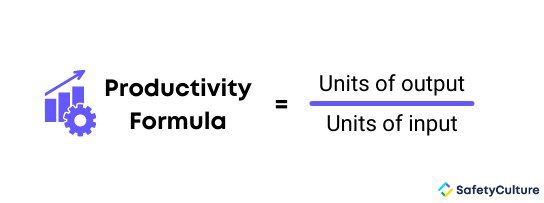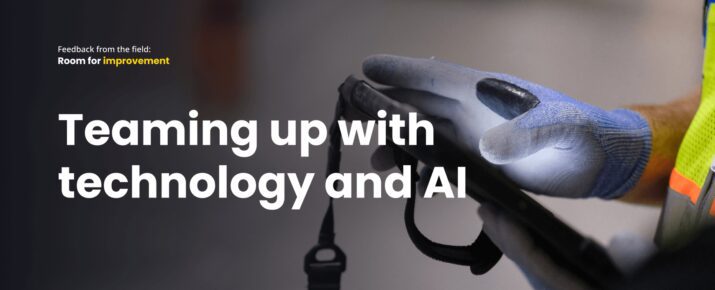Effectively Measuring Your Distributed Team’s Productivity
Ask The Experts | Feedback From The Field | By | 15 Nov 2021 | 4 minute read

Productivity metrics indicate whether a productivity goal is being met or not. They’re a part of your KPIs which gives you a clue into how your business and your team members are performing. The key to determining what you should be measuring, relies on your understanding of the various factors affecting your workforce.
The COVID-19 pandemic has proven beyond any doubt that you don’t need all your people in the same place, at the same time, in order to get things done. The goal now is to make working from home sustainable as it becomes a permanent fixture of the new normal. This requires effective ways to measure your distributed team’s productivity.
Many businesses who had previously resisted letting their people work remotely had no choice during the pandemic. Much of that fear came from managers not trusting people to work when they’re not in sight. They want to see their people working hard.
People might look busy rushing around the office, but of course there’s a big difference between busy and productive. That’s why you need to judge productivity on empirical evidence, not just a gut feeling.
Once you’ve got this empirical evidence at your fingertips, you can make sure you’re getting the best from your team no matter where they are.
This article will answer the following questions:
- What is productivity?
- Why is it important to measure productivity?
- How do you measure it?
- What are ‘leading and ‘lagging’ indicators?
What is Productivity?
By definition, productivity is a ratio of output over input. In a business setting, your output would be profit value or the units of products and services that the company produces. The inputs are the resources or production effort put in to produce the said product or service.

Why is it important to measure productivity?
Measuring productivity is necessary to the success of your business. Now, it isn’t simply about wanting to crack the whip and squeezing more out of your people. Because in the long term, that’s likely to be counterproductive. Instead, it is about understanding the overall effectiveness and efficiency of your processes and workforce so you can make better operational decisions.
Here are several reasons why you should be measuring productivity:
- It ensures your team is consistently achieving its best and improving over time, especially under difficult conditions. The Great Resignation is a stark reminder that the market is moving quickly and organizations need to pay attention to what processes are needed to encourage productivity and workplace satisfaction. Our latest global research reveals essential feedback from the frontlines on how to better operations .
- Regularly measuring productivity lets you watch for warning signs. Studies show that happy employees are productive employees, so when productivity drops it’s a potential sign to reach out to the individual or group to make sure everything is okay.
- You can’t make assumptions, you need reliable data to accurately gauge effectiveness and efficiency in the workplace. Alternatively, you might realize that it’s a case of your people not having the right tools, skills or training for the job. Remember, your efforts to measure productivity need to be built on a foundation of trust. They need to be introduced in consultation with your people, making it clear what you’re tracking, how you’re tracking it and why.
Bring your team on the journey and show them how measuring productivity can benefit everyone, not just the business’ bottom line.
How do you measure productivity?

The basic formula for measuring productivity is to track the quantity, quality and efficiency of your team’s work. They say that two out of three ain’t bad, but not in this case – if any of those three fall short then productivity will suffer.
Don’t make the mistake of primarily focusing on hours worked, that’s just one metric. Your productivity metrics should pay more attention to the quantity, quality and efficiency of your team’s output. If they’re working long hours but not getting much done, or not doing a great job, that’s a sign that something’s wrong. Making them work longer hours, or micromanaging them such as timing their toilet breaks, won’t fix the problem.
Useful productivity metrics can include tracking the completion of tasks, including key milestones, and the time spent on each task. When it comes to quality, consider errors and defects, along with customer feedback and satisfaction. Also listen to your people and take onboard their feedback. This way you’re basing your productivity metrics on both quantitative and qualitative data.
What are ‘leading and ‘lagging’ indicators?
Keep in mind, most of these quality and efficiency metrics are ‘lagging’ indicators. They tell you what has happened in the past. It’s important to also consider ‘leading’ indicators, which predict what’s likely to happen in the future.
Lagging indicators are outputs and outcomes which are easy to measure but perhaps hard to change. Meanwhile, leading indicators are inputs which can be easier to change but more difficult to measure. As a result, it’s tempting to mostly focus on lagging indicators but best practice is to pay attention to both.
For example, the number of injuries on a building site is a lagging indicator of safety. It tells you what has already happened and you can’t change the past.
Meanwhile, the percentage of people wearing hardhats on a building site – in order to proactively reduce injuries – is a leading indicator of safety. It tells you what is likely to happen in the future.
When it comes to productivity, leading indicators can include whether people know their goals, what’s required to achieve them and exactly what they need to get done today, this week and this month.
Think of leading indicators as benchmarks which can help you meet your KPIs and objectives. Get them right and you’re setting yourself up for success.
How do you make the most of all this data?
Each of these indicators can tell a story on their own, but you can also learn a lot from combining them.
Common productivity calculations include revenue per employee, revenue per hours worked and labour cost per project.
Don’t just dive in, before you start you need to define clear objectives and your plan for achieving them. This means determining which productivity metrics are most relevant to your team’s productivity and establishing a way to collect, measure, review and act on that data. You also need to regularly review all this to assess its effectiveness.
You’re wasting your time if you don’t ensure that your productivity efforts are actually productive.

Dig into the insights you need to reset your operations and get back on track.
Download the full report here.
Important Notice
The information contained in this article is general in nature and you should consider whether the information is appropriate to your specific needs. Legal and other matters referred to in this article are based on our interpretation of laws existing at the time and should not be relied on in place of professional advice. We are not responsible for the content of any site owned by a third party that may be linked to this article. SafetyCulture disclaims all liability (except for any liability which by law cannot be excluded) for any error, inaccuracy, or omission from the information contained in this article, any site linked to this article, and any loss or damage suffered by any person directly or indirectly through relying on this information.





